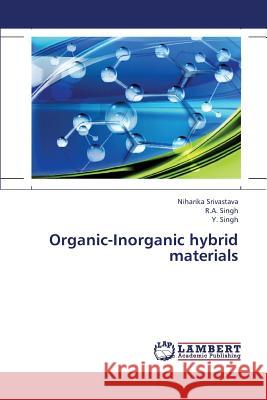Organic-Inorganic Hybrid Materials » książka
Organic-Inorganic Hybrid Materials
ISBN-13: 9783659114359 / Angielski / Miękka / 2013 / 96 str.
Nano-ordered composite materials consisting of organic polymers and inorganic compounds have been attracting attention for their use in creating high-performance or high-functionality polymeric materials. These materials are termed as "hybrid" which are blend of organic and inorganic components with molecular-level dispersions. Hybrid organic-inorganic materials are of two kinds: homogeneous systems derived from monomers or miscible organic and inorganic components, and heterogeneous and phase-separated systems with domains ranging from angstroms to micrometers in size. Integral to this definition is control over the size, composition, and topology of the organic and inorganic components, which depends upon the reaction and processing conditions used in the hybrid materials' syntheses. The high degree of control over the composition and structure in hybrids permits systematic investigations of structure-property relationships which can result in improved mechanical, thermal, optical, or chemical properties relative to the organic or inorganic materials alone. Hybrid organic-inorganic materials are generally prepared through solution or sol-gel processing, in situ polymerization te
Nano-ordered composite materials consisting of organic polymers and inorganic compounds have been attracting attention for their use in creating high-performance or high-functionality polymeric materials. These materials are termed as "hybrid" which are blend of organic and inorganic components with molecular-level dispersions. Hybrid organic-inorganic materials are of two kinds: homogeneous systems derived from monomers or miscible organic and inorganic components, and heterogeneous and phase-separated systems with domains ranging from angstroms to micrometers in size. Integral to this definition is control over the size, composition, and topology of the organic and inorganic components, which depends upon the reaction and processing conditions used in the hybrid materials syntheses. The high degree of control over the composition and structure in hybrids permits systematic investigations of structure-property relationships which can result in improved mechanical, thermal, optical, or chemical properties relative to the organic or inorganic materials alone. Hybrid organic-inorganic materials are generally prepared through solution or sol-gel processing, in situ polymerization te











